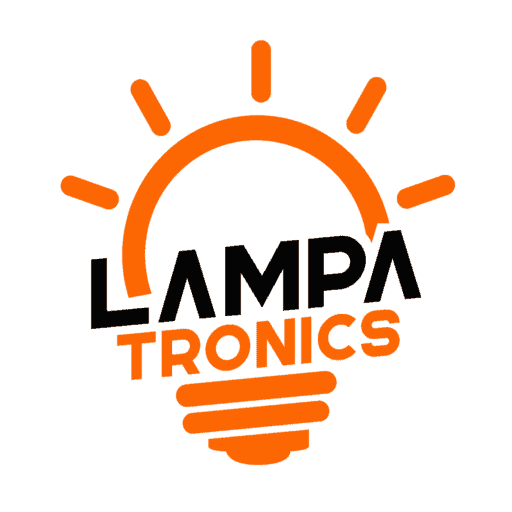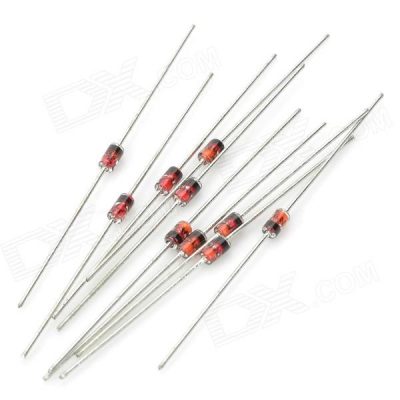74195 (8-bit Shift Register)
Description
The 74195 is an 8-bit Shift Register with parallel load and serial in/out functionality. It is part of the 7400 series of ICs and is typically used in digital systems to store and shift data. The 74195 IC is widely used in applications requiring the serial-to-parallel or parallel-to-serial conversion of data.
74195 IC Description:
The 74195 is an 8-bit Shift Register that can be used to store data and shift it in or out either serially or in parallel. It is commonly used in digital systems for data storage, serial-to-parallel conversion, and parallel-to-serial conversion. The shift register has parallel load functionality, allowing it to capture and hold data from the parallel inputs when a load signal is given.
Key Features:
- 8-bit Shift Register: The 74195 has 8 bits of storage, meaning it can store and shift 8 bits of data.
- Serial Data Input (DS): It has a serial input (DS) for shifting data in one bit at a time.
- Parallel Data Input (D0–D7): It also has parallel data inputs for loading the shift register with 8 bits of data in parallel.
- Shift Control: The IC allows data to be shifted left or right, controlled by the Shift/Load (S/L) pin.
- Serial Output (QH): The 74195 has a serial output (QH) that outputs the shifted data.
- Clocked Operation: The register is clocked, meaning data is shifted or loaded on the rising edge of the clock signal.
- Active-Low Reset (MR): The IC includes an active-low reset input, which clears the data in the register when low.
- Enable Pin: The Output Enable (OE) pin controls whether the data is output from the register.
Pin Configuration (16-pin package):
Here’s the pinout for the 74195:
- Pin 1 (QH): Serial output of the shift register.
- Pin 2 (Q0): Parallel output bit 0.
- Pin 3 (Q1): Parallel output bit 1.
- Pin 4 (Q2): Parallel output bit 2.
- Pin 5 (Q3): Parallel output bit 3.
- Pin 6 (Q4): Parallel output bit 4.
- Pin 7 (Q5): Parallel output bit 5.
- Pin 8 (Q6): Parallel output bit 6.
- Pin 9 (Q7): Parallel output bit 7.
- Pin 10 (MR – Master Reset): Active-low reset input. Resets all data to 0.
- Pin 11 (Shift/Load): Shift/Load control input.
- Pin 12 (Clock): Clock input for shifting data.
- Pin 13 (Parallel Data Inputs D0 to D7): 8-bit parallel data input (D0 to D7).
- Pin 14 (Serial Data Input): Serial input for shifting data in (DS).
- Pin 15 (Vcc): Supply voltage (typically 5V).
- Pin 16 (Output Enable – OE): Active-low output enable input.
How It Works:
- Parallel Load:
- When the Shift/Load (S/L) pin is low, the 74195 will load data from the parallel inputs (D0 to D7) into the shift register. The data is loaded in parallel (all bits at once) on the rising edge of the Clock signal.
- Shifting Data:
- When the Shift/Load (S/L) pin is high, the shift register will shift the data either to the left or right on the rising edge of the Clock.
- Serial Input (DS): Data is shifted into the shift register serially, one bit at a time, from the DS pin, and it will shift towards the Q7 or Q0 depending on the shift direction.
- Shift Direction: The direction of the shift is controlled by the logic level of the Shift/Load pin and other control signals (if applicable).
- Serial Output (QH):
- The shifted data is available at the serial output (QH). This output provides the last shifted bit when the register is being used in a serial data transfer configuration.
- Reset Function:
- The MR (Master Reset) pin is active-low. When it is low, the shift register is reset, and all outputs (Q0 to Q7) are set to 0.
- Output Enable:
- The Output Enable (OE) pin controls whether the parallel outputs are active. When OE is low, the parallel outputs (Q0 to Q7) reflect the stored or shifted data. When OE is high, the outputs are disabled and in a high-impedance state, effectively disconnected from the circuit.
Truth Table:
| S/L (Shift/Load) | Clock (CLK) | MR (Master Reset) | DS (Serial Data Input) | Parallel Data Inputs (D0–D7) | Q0–Q7 | QH (Serial Output) |
|---|---|---|---|---|---|---|
| Low | Rising Edge | Active Low | – | D0 to D7 | D0 to D7 (Parallel Load) | – |
| High | Rising Edge | Active Low | DS | – | Shifted Data Left/Right | Last Shifted Bit |
| Low | – | Low | – | – | 00000000 (Reset) | – |
| High | – | Low | – | – | Shifted Data (If Clocked) | Last Shifted Bit |
Applications:
- Data Storage: The 74195 can be used to store 8 bits of data and shift that data in or out as required. It is useful for applications that require temporary storage and shifting, such as buffering or delays.
- Serial-to-Parallel or Parallel-to-Serial Conversion: It is commonly used in systems that need to convert between serial and parallel data formats. For example, it can be used to convert serial data into parallel format to interface with microcontrollers or other digital systems that use parallel data.
- Shift Register: It is a fundamental component in shift registers and is used in applications like data transmission, serial data handling, or data serialization.
- Bus Interfacing: The 74195 can be used in systems where multiple devices are connected to a shared bus, allowing data to be shifted in and out of the bus for communication or processing.
- Digital Counters: It can be used as a part of a digital counter system, where data is shifted in or out sequentially, making it useful in timing circuits, frequency generation, or other counting applications.
- Microcontroller Interfacing: It can be used to expand the number of digital I/O pins available on a microcontroller, enabling it to read/write more data with fewer pins.
- Signal Conversion: It can be used to convert between different types of signal formats, such as parallel-to-serial or serial-to-parallel.
Electrical Characteristics:
- Supply Voltage (Vcc): Typically 5V (can operate in the range of 4.5V to 5.5V).
- Low Power Consumption: Being a CMOS IC, the 74195 has low power consumption, making it suitable for battery-powered applications.
- Clock Frequency: The speed of operation (shift rate) depends on the clock frequency, but it typically operates at standard clock speeds for most logic circuits.
Example Circuit:
In a microcontroller-based system, the 74195 can be used to handle serial communication. The serial data input (DS) can be connected to the microcontroller’s output pin, and the parallel data outputs (Q0 to Q7) can be used to interface with other digital devices. The Shift/Load (S/L) pin can control whether the data is loaded in parallel or shifted serially, and the Clock pin is controlled by the microcontroller to clock data into or out of the shift register.
Only logged in customers who have purchased this product may leave a review.
- Image
- SKU
- Rating
- Price
- Stock
- Availability
- Add to cart
- Description
- Content
- Weight
- Dimensions
- Additional information







Reviews
There are no reviews yet.